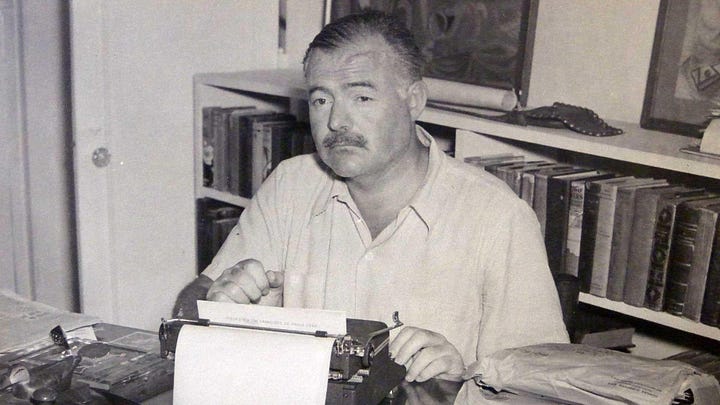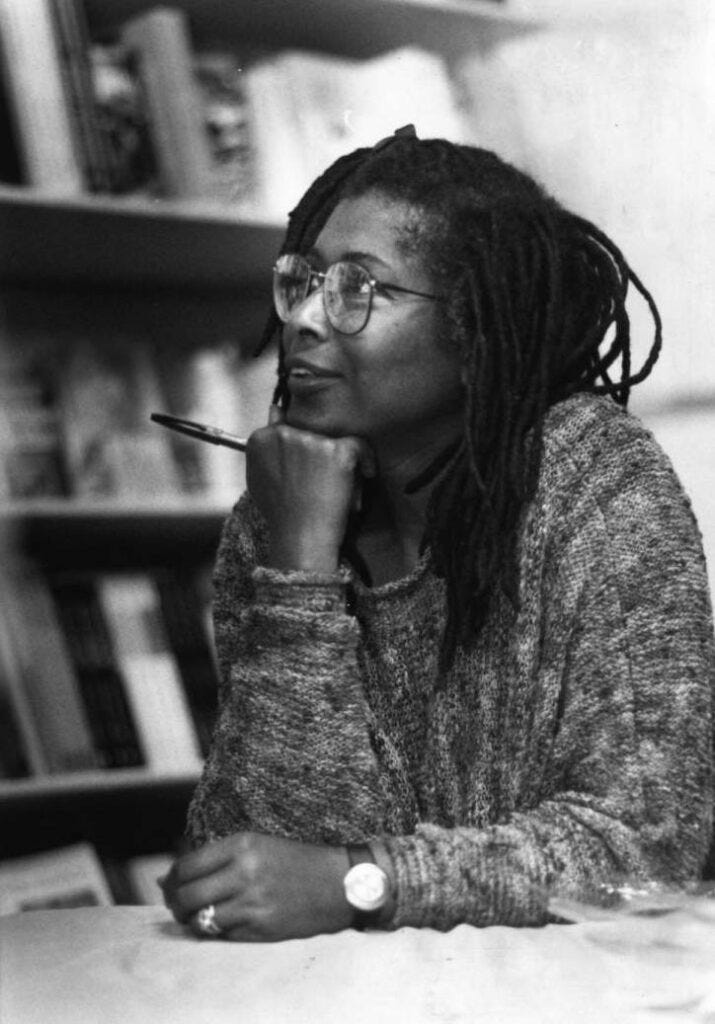

Alice Walker's writing method is not so different from Ernest Hemingway's 2-step method of writing:
1. Delve into a scene and describe it vividly -- never say the party was merely "exciting." Show WHY. Let readers feel we are there experiencing everything first hand. Listen carefully, completely. Observe.
2. Do so with empathy.
Then repeat, repeat, repeat. Walker wonders if it's possible to write a story/novel without conflict. She believes it is possible and I concur. To do so, simply put "a small picture into the mind of the reader."Hemingway's Writing Rules
While writing for the Kansas City Star, Ernest Hemingway came up with these 4 writing rules. My additions are in brackets.
1. Use short sentences. But if they are shorter, they pack a greater punch. [Traditionally, the perfect sentence was said to be 17 words long. Mixing long and short sentences is also highly effective.]
2. Use short first paragraphs. The idea is to hook in readers without overwhelming them with too much info up front. Give just enough info for them to orient themselves into the story.
3. Use "vigorous English" -- highly focused, no wasted words, thoroughly edited.
Example of a weak sentence: He walked slowly.
Buffed up vigorous English: He sauntered looking dejected.
4. Be positive, not negative -- for the most part, even when dealing with negative topics, do so in a positive way. This requires a shift in thinking. Stream of Consciousness & Writing Prompts
·
Patrick White's 1973 novel "The Eye of the Storm," by far his longest work, has virtually no plot and no real action: a nearly blind matriarch lies sick in bed slowly dying for 550 uninterrupted pages of absolutely fascinating stream of consciousness writing. Morphine given to ease her pain stimulates flashbacks of her life. The psychological dimension…





